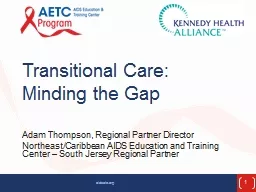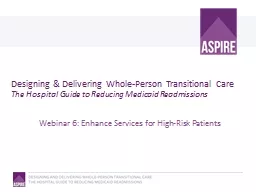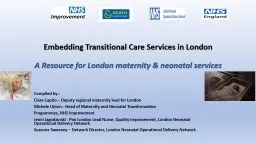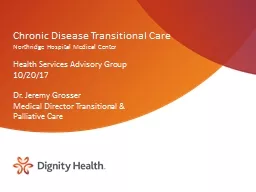PPT-Transitional Care: Minding the Gap
Author : briana-ranney | Published Date : 2018-10-21
Adam Thompson Regional Partner Director NortheastCaribbean AIDS Education and Training Center South Jersey Regional Partner 1 aidsetcorg Overview Introduction
Presentation Embed Code
Download Presentation
Download Presentation The PPT/PDF document "Transitional Care: Minding the Gap" is the property of its rightful owner. Permission is granted to download and print the materials on this website for personal, non-commercial use only, and to display it on your personal computer provided you do not modify the materials and that you retain all copyright notices contained in the materials. By downloading content from our website, you accept the terms of this agreement.
Transitional Care: Minding the Gap: Transcript
Download Rules Of Document
"Transitional Care: Minding the Gap"The content belongs to its owner. You may download and print it for personal use, without modification, and keep all copyright notices. By downloading, you agree to these terms.
Related Documents












![Download Book [PDF] Minding My Business: The Complete, No-Nonsense, Start-to-Finish Guide](https://thumbs.docslides.com/1017597/download-book-pdf-minding-my-business-the-complete-no-nonsense-start-to-finish-guide-to.jpg)

